A very powerful, portable, personal information manager that has collected everything possible: mail, message templates, contacts, calendar, tasks, intelligent visual maps, Internet browser, bookmarks, RSS, file browser, passwords, encryption, password generator, quick notes, diary; all this is colorful, juicy, decorated with colors, fonts, icons, emoticons, pictures. Yes, it is a really powerful and convenient program, but with one caveat, which will be discussed later.
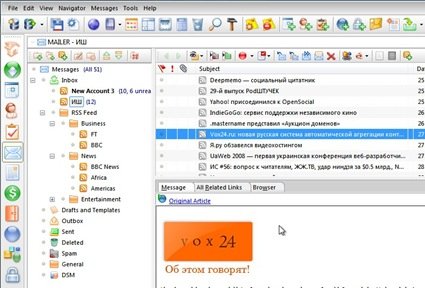
This personal manager is functionally so broad that it will not be possible to briefly consider its capabilities. The program consists of several modules, each of which is responsible for its work and contains individual settings, but all together they are combined into one database with a common control panel. Quick access to all modules can be carried out either from the main menu of the program, from the side bar, which can be displayed in all modules, or from a small quick launch panel, which is located on the desktop.

The calendar is comparable in functionality to the outlet, has the same number of settings, design chips, the same overlap by type (day, week, month, year), pop-up preview, customizable recurring events, communication with files and contacts.
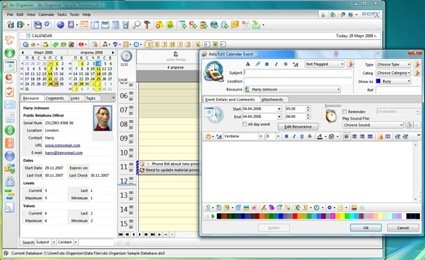
I especially liked to review the annual planning — very clearly,

and adding an event is — simple and customizable in all parameters.
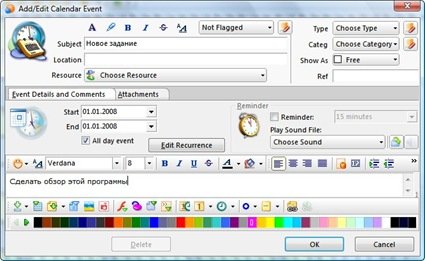
Contacts have a lot of settings, you can specify any data that comes to mind, and all this is beautifully and clearly displayed in the form of business cards, lists and tables.
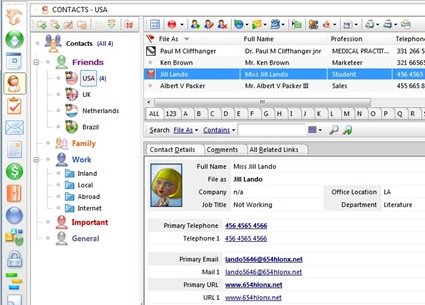
The tasks are functionally also very advanced and convenient. Depending on the status, they are decorated with beautiful icons in the task tree. Adding tasks is the same as adding events to the calendar, with the difference only in tracking the progress status.
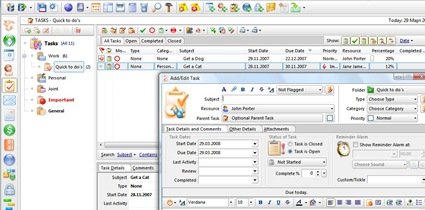
Scribe, or as I would translate, marginal notes, may contain nested topics, contain RTF text and graphics.
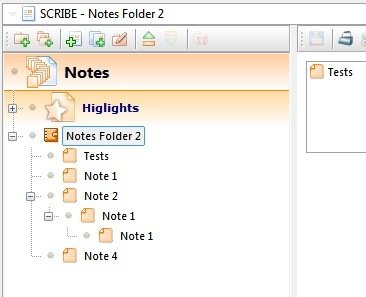
A journal is nothing more than a diary in which you can make notes. It has functionality similar to a good document editor.
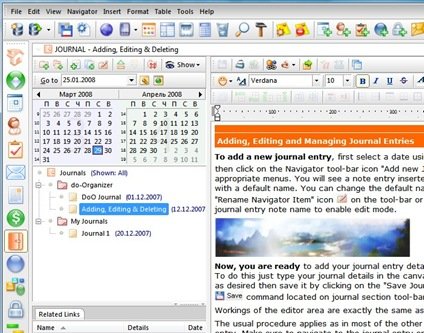
Mindscape — is a real visual brainstorming that can be visually displayed. It will be useful when preparing some kind of project, report, when developing a strategy and action plan, division of responsibilities, when building a hierarchical structure of subordinates and dependencies — a beautiful function.
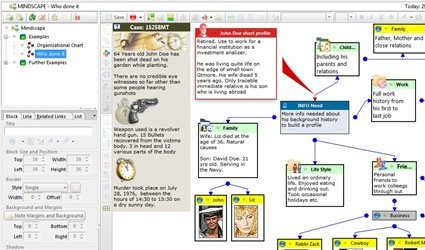
Planner — is a visual planning function that visually displays the timeline of projects, their descriptions, categories; Planner seemed to me very convenient and visual.
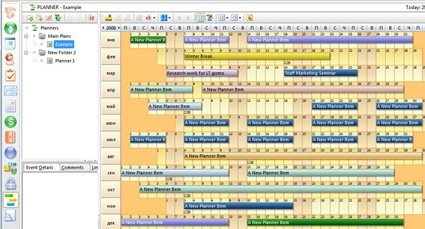
Vault — is its own manager of logins and passwords that can be safely hidden from outsiders (for example, passwords from websites). All this can be divided into categories and built into a tree structure. If your mind refuses to come up with a password for some reason, then you can use the password generator built into the program.
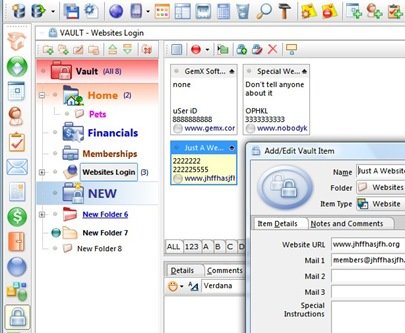
Linx — manager of individual favorites links that are not linked and favorites in the system. Shows links by category, counts the number of visits, the last dates of views, checks for validity.
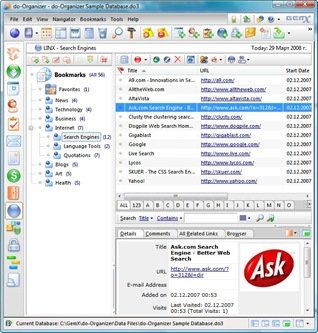
There is even a browser for viewing links, which reminded me of a very simplified copy of the Avant Browser. It has tabs and a built-in Google search.
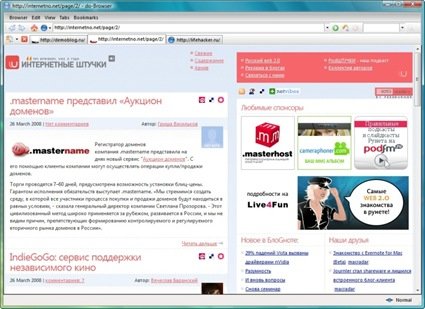
The program has a financial manager that monitors the status of your accounts and bank cards, in which you can enter all transactions with money.
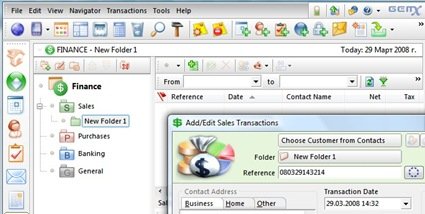
There is a kind of resource manager — records that can be useful, data that can be collected, collected (for example, your film library, an interesting article from the Internet or a friend's autobiography).
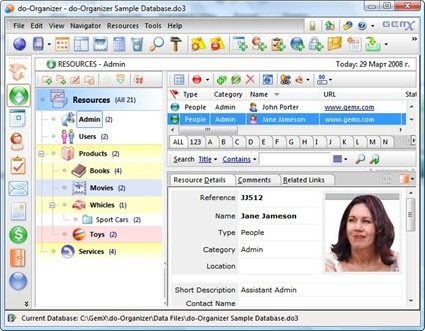
Now about the built-in file browser. It is similar to Windows Explorer, but there are a number of individual differences, the most useful of which seems to me to be file encryption.
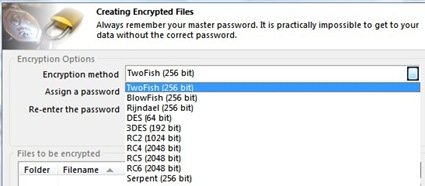
Of the useful additions, it should also be noted a calculator in which you can enter data in the same way as in a notebook, with all punctuation marks and calculation rules.
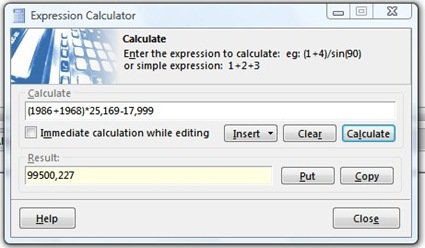
And now I'll go directly to the Mailer — module for working with email and RSS. Everything is fine in it, it is configured by rules, and there are message templates, and pop-up notifications about the arrival of new mail, you can attach notes, reminders to messages, you can insert emoticons into letters, but against the background of all these positive and useful qualities, there is one feature that negates all the advantages of this powerful, very convenient program: she doesn't know how to work with Cyrillic. How many programs did not take root on the territory of the Slavs precisely because of this so to speak absence of the Cyrillic alphabet. I did not express myself quite accurately: the program understands Cyrillic as such, as evidenced by the correct display of message headers, and the notes exported and read later, but there is no automatic encoding detection in the program (and if there is, then there are no Cyrillic sets in it).
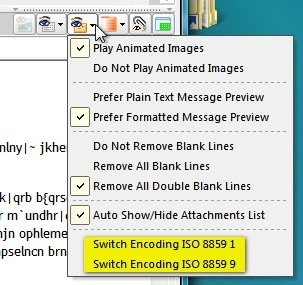
It's a shame that the developers do not pay attention to 200 million potential users, and because of this, I will not use this program, although it would be very convenient: it can exchange data with a PDA and work from a flash drive, which makes it a unique portable tool for such a functional filling that has no analogues. Of course, having done such a titanic work, the developers do not distribute the program for free, but there is always an opportunity to try. The program is not small, more than 20 megabytes, but considering that it alone can replace a dozen good utilities, the size seems insignificant. The language is English, Windows from 2k to Vista.